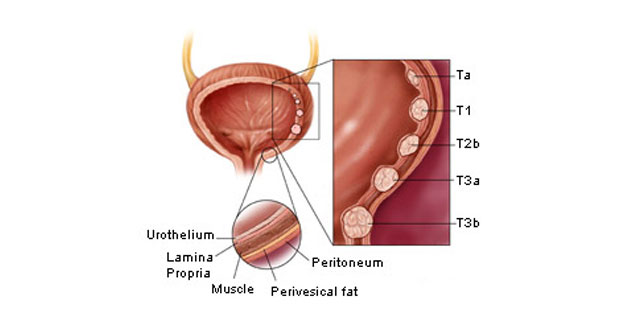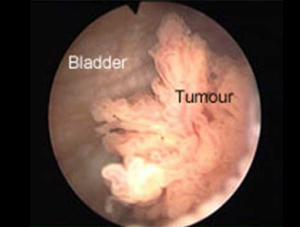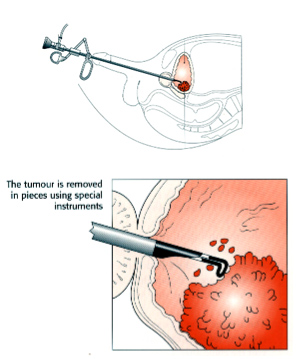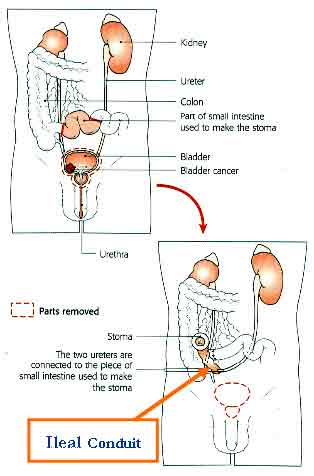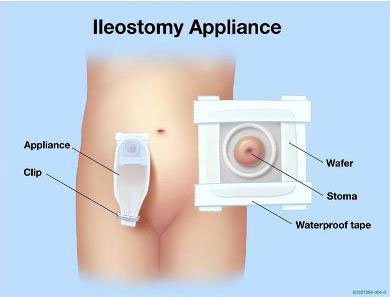This is second common cancer of genito urinary tract.
Cancer-causing agents (carcinogens) in the urine may lead to the development of bladder cancer. Cigarette smoking contributes to more than 50% of cases, and smoking cigars or pipes also increases the risk. Other risk factors include the following
- Age
- Chronic bladder inflammation (recurrent urinary tract infections, urinary stones)
- Consumption of Aristolochia fangchi (herb used in some weight-loss formulas)
- Diet high in saturated fat
- Exposure to second-hand smoke
- External beam radiation
- Family history of bladder cancer (several genetic risk factors identified)
- Gender (male)
- Infection with Schistosoma haematobium (parasite found in many developing countries)
- Personal history of bladder cancer
- Race (Caucasian)
- Treatment with certain drugs (e.g., cyclophosfamide—used to treat cancer)
Signs and Symptoms
The primary symptom of bladder cancer is blood in the urine (hematuria). Hematuria may be visible to the naked eye (gross) or visible only under a microscope (microscopic) . Hematuria is usually painless. Other symptoms include frequent urination and pain upon urination (dysuria).
Diagnosis
A complete medical history is used to identify potential risk factors (e.g., smoking, exposure to dyes).
Laboratory tests may include the following:
- Urinalysis (to detect or confirm microscopic hematuria)
- Urine culture (to rule out Urinary Tract Infection)
- Urine cytology (to detect cancer cells by examining cells flushed from the bladder during urination)
Appearance of bladder cancer on cystoscopy
IVU or intravenous urography is a series of X-rays taken of the kidney, ureter and bladder after injection of a dye into the bloodstream. The aim is to diagnose tumours that may arise from the internal mucosal lining of the whole urinary tract.
CT Urography is a series of CT scan X-rays of the kidney, ureter and bladder taken after injection of a dye into the bloodstream. This very detailed study not only allows tumours arising from the internal mucosal lining to be diagnosed, it can also detect solid tumours in the kidney and bladder.
Treatment of bladder cancer
TURBT (Transurethral resection of bladder tumour)
Using a specialised telescopic instrument, the bladder tumour is scraped and removed through the urethra. There is no operation or scar in the abdomen. This operation is done under spinal or general anesthesia.
The resected tumour is then sent to the lab for microscopic study to confirm the nature and stage of cancer.
Intravesical Treatment ( Instillation chemotherapeutic agent or BCG in the bladder)
Invasive bladder cancer
- Includes tumour that has invaded the bladder muscle.
- Has a high risk of developing metastases.
- Up to 15% of patients with superficial tumours develop invasive or metastatic disease.
Treatment of invasive bladder cancer
Treatment involves removal of entire bladder and reconstruction
- Types of bladder reconstruction include ileal conduit, catheterizable pouch and neobladder.
- Radical cystectomy with formation of ileal conduit is the gold standard treatment
- When cancer has spread outside the bladder wall, cystectomy is not usually done. The benefits of removing the bladder are to control disease, eradicate symptoms associated with bladder cancer and long-term survival.
- For advanced bladder cancer that has spread beyond the bladder wall radiation and chemotherapy are treatment options.
Radical cystectomy and illeal conduit can also be performed by Da Vinci Robot.
Robotic cystectomy has following advantages
- Less painful
- Less blood loss
- Smaller incision
- Partial Cystectomy for select Invasive bladder
- Radiation treatment for Muscle Invasive bladder cancer
- Bladder preservative treatment-combination of endoscopic surgery,
- Radiation and chemotherapy
Chemotherapy
 Urologist in Chennai | Robotic Urologist in India | Chennai Urology
Urologist in Chennai | Robotic Urologist in India | Chennai Urology

